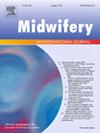Exploring early labour care in the context of an institutional reorganisation towards a more women-centred approach: An ethnographic field study
IF 2.6
3区 医学
Q1 NURSING
引用次数: 0
Abstract
Background
Internationally, midwifery is working to improve early labour care by shifting away from delayed admission (i.e., waiting for measurable signs of impending active labour) towards an emphasis on the needs of individual women and their partners. Individualised in-hospital early labour care is a new field that is largely unexplored.
Aim
To explore how midwives provide care for women in early labour within a clinical practice that is transitioning towards a more woman-centred approach.
Methods
The researchers conducted an ethnographic field study using participant observation and informal interviews at a new section for women in early labour alongside the labour ward. The section featured latent-phase rooms for women and their partners who felt uncomfortable staying at or returning home.
Findings
Data analysis identified three main themes: “Navigating Uncharted Terrain” unfolds how embedded care practices challenged detecting women's needs and delivering woman-centred care. “Addressing Insufficient Language for Undefined Needs and Relational Care” highlights the challenges in attending to women's needs due to a lack of specific language for certain care types. Finally, “Caring Within an Institution” emphasises the influence of institutional conditions on achieving woman-centred early labour care.
Conclusion
Despite working in a hospital setting that promotes individualised early labour care, the midwives in our study had limited early labour care experience and needed additional support from the institution in developing new care practices. A woman-centred early labour care program valuing the significance of relational care is necessary to successfully build and implement woman-centred early labour care competencies and practices.
求助全文
约1分钟内获得全文
求助全文
来源期刊

Midwifery
医学-护理
CiteScore
4.50
自引率
7.40%
发文量
221
审稿时长
13.4 weeks
期刊介绍:
Midwifery publishes the latest peer reviewed international research to inform the safety, quality, outcomes and experiences of pregnancy, birth and maternity care for childbearing women, their babies and families. The journal’s publications support midwives and maternity care providers to explore and develop their knowledge, skills and attitudes informed by best available evidence.
Midwifery provides an international, interdisciplinary forum for the publication, dissemination and discussion of advances in evidence, controversies and current research, and promotes continuing education through publication of systematic and other scholarly reviews and updates. Midwifery articles cover the cultural, clinical, psycho-social, sociological, epidemiological, education, managerial, workforce, organizational and technological areas of practice in preconception, maternal and infant care.
The journal welcomes the highest quality scholarly research that employs rigorous methodology. Midwifery is a leading international journal in midwifery and maternal health with a current impact factor of 1.861 (© Thomson Reuters Journal Citation Reports 2016) and employs a double-blind peer review process.
 求助内容:
求助内容: 应助结果提醒方式:
应助结果提醒方式:


